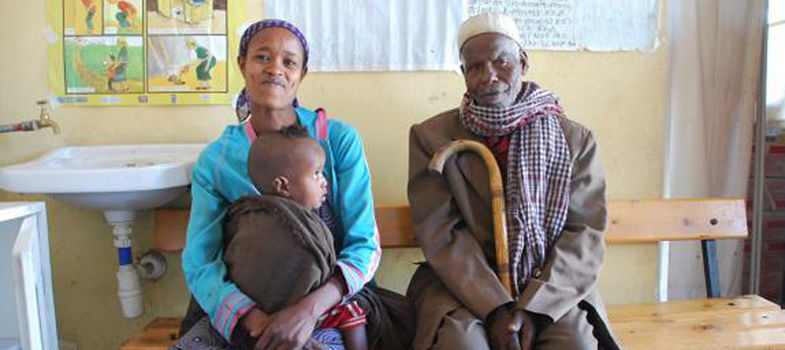5.3.1 Implantation
Between five to seven days after fertilisation, the blastocyst reaches the uterus and embeds itself in the thickened endometrium (lining of the uterus). This process is called implantation, and if the embryo survives it is the beginning of a pregnancy. However, the embryo may not implant, or it may not survive for more than a few days. In this case, it is shed from the uterus as the endometrium breaks down, and it passes out of the vagina in the menstrual fluid. The loss of a very early pregnancy in this way is very common, and the woman does not even know that she was momentarily pregnant.
![]() If you suspect an ectopic pregnancy, refer the woman immediately.
If you suspect an ectopic pregnancy, refer the woman immediately.
Implantation may also occasionally occur in the fallopian tube, which is called an ectopic pregnancy and is very dangerous for the woman. The tube may rupture as the embryo grows, and cause severe pain and loss of blood into the abdominal cavity.
If the blastocyst implants successfully in the uterus, the cells go on multiplying by cell division and moving around into new locations to form two distinct structures:
- Three or four blastocyst cells develop into the inner cell mass, which — over the next few weeks — will form into the recognisable structures of a human embryo, with a head, beating heart and tiny limbs. Some of these cells also develop into the fetal membranes that form a fluid-filled protective ‘bag’ around the embryo.
- The remaining 100 or so blastocyst cells form a structure called the trophoblast, which will provide the baby’s contribution to the placenta. The first stage of development of the placenta is when the trophoblast cells burrow into the endometrium.
Box 5.1 summarises the names and dates of the key stages in the development of a human, from fertilisation until one year after birth.
Box 5.1 Human developmental stages after fertilisation
Fertilisation: fusion of ovum and sperm on day one
Morula: solid ball of cells after three days
Blastocyst: hollow ball of cells after five days
Trophoblast: forms early embryo, fetal membranes and placenta after five to seven days
Embryo: the developing human from fertilisation to the eighth week of pregnancy
Fetus: the developing human from nine weeks of pregnancy to birth at around 40 weeks
Neonate: newborn baby from birth to 28 days old
Infant: baby or young child aged less than one year.
5.3 Early development of the embryo
